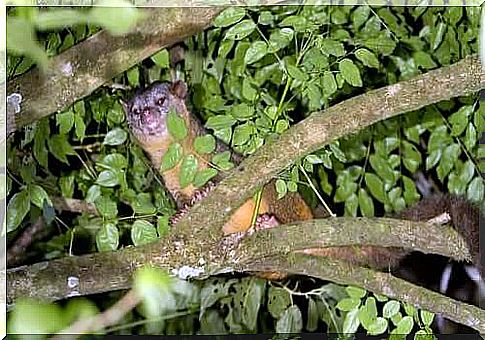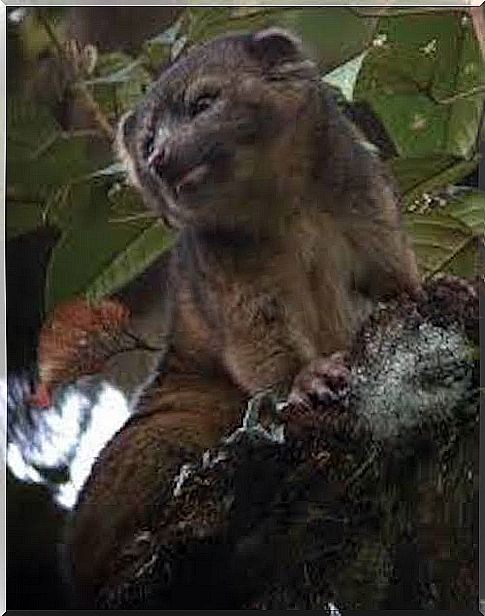Olinguito, A New Species Of Mammal

Have you ever heard of olinguito? No? Well, that’s not strange at all, since it is a mammal that we have only recently known about.
Olinguito is a species discovered a few years ago by scientists from the Smithsonian Institution in the Andean forests of Ecuador. This specimen has been present in museums and zoos for decades, but has not been adequately identified.
Also known as “cuataquil”, it is part of the animal genus of olingoes and is a close relative of raccoons and coatis. Scientists decided to study the various olingo species in depth and discovered specific features of the olinguito that differed from other olingoes: a smaller skull and longer fur.
Based on these characteristics, a team of scientists went to Ecuador with the intent of finding out if this recently cataloged species thrived in nature.
Indeed, scientists were able to find groups of Olinguito living in the highlands of the Andes. However, there are still many questions about this beautiful animal today.
Morphology, behavior and habitat of the olinguito
The cutest mammal of recent years is a skinny animal that can grow up to 30-35 centimeters in length. The tail is long-haired, slightly ringed, and adds another 45 centimeters to the length of this animal. The olinguito has soft gray-brown fur and a pointed muzzle. The ears are rounded and can weigh up to 900 grams (on average).
Olinguites reside in the rainforests of Ecuador and Colombia and love to build their homes at altitudes between 1,530 and 2,740 meters. It is not considered an endangered species. However, it is estimated that its natural habitat has been deforested by more than 40%, which affects the life expectancy of this animal.

This animal is arboreal and has great ability to move by jumping from one branch of the trees to another. It has nocturnal habits, is carnivorous and is thought to be a solitary species. During the duration of the team of scientists’ expedition, no more than one individual was ever sighted at a time.
A great discovery
The discovery of this species was announced in August 2013, after expert curators of science museums identified significant differences between the specimens they had available. They used a DNA test to confirm their doubts and were able to determine the new species.
It is the first time in 35 years that a new mammal species of the order of carnivores has been discovered in America. For decades olinguites have been exposed to the public without recognizing them as a new species. These animals were confused with the olingos, a similar lineage to which they are related.
This discovery shows everyone that there is still a lot to know about our world. There are still many secrets to be discovered and there is a need to study and investigate. Scientists say discoveries like this don’t happen overnight. The study of the olinguito, in fact, lasted about ten years, and was not the main objective of the expedition.

The initial research consisted of conducting a comprehensive study of the olingoes that lived in trees, understanding how many species of olingo existed and how these species were distributed in the territory. Unexpectedly, a detailed examination revealed the existence of a species not previously described.
There is still a lot to study
The information gathered to date is the result of a joint study between researchers from the Smithsonian Institution, Ecuadorian professionals and people who live near the areas where the animal lives. But the research is not finished, other expeditions are planned to learn more about the characteristics of the olinguito’s behavior.
We will travel to Colombia and Ecuador with the hope of collecting data that will allow a greater knowledge of this species. Furthermore, contacts will be maintained between researchers and scholars of the two countries with the aim of deepening the study of this mammal.
The effort made by scholars has made it possible to recognize this new species. We cannot fail to mention the contributions of volunteers residing in the research areas, who with their videos and photographs provided the researchers with very important information. This allowed us to learn more about the way of life of the olinguito in nature.
For example, it was possible to observe a baby olunguito and its nest above the branches of the trees in the forest. But there is still a lot to know. We are all looking forward to the new discoveries about this beautiful animal.









